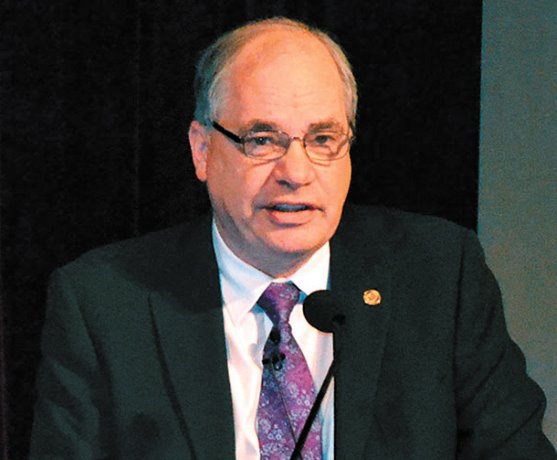When your roof starts leaking, you can’t ignore it, even when there are mortgage payments to make as well. It’s no different on the larger scale when it comes to government and the management of infrastructure, Canadian Construction Association president Michael Atkinson stated during the 30th Annual CanaData East Construction Industry Forecast Conference in Toronto.
"Most politicians at all levels of government in Canada could barely spell the word infrastructure let alone knew what it was about or its importance to the Canadian economy," he stated in reference to governments 25 to 30 years ago.
"It was an easy source to cut. We foregoed these needed investments at a time when we should have been investing in infrastructure because of the concern about balancing the budget. I think now it’s come home to roost a bit. We realized that was a mistake. You can walk and chew gum at the same time. You need to ensure that you’re investing in the supporting infrastructure to your economy even in fiscal tough times."
He said the recent federal election campaign has brought to light the importance of infrastructure with all political parties in one way or another making commitments.
"Infrastructure remains high on the radar screen — instead of being an afterthought. Infrastructure is a key goal and objective of all four major political parties," Atkinson explained.
"All governments within Canada, I believe, understand the importance of the quality of infrastructure to Canada’s overall competitiveness, its overall productivity, the prosperity of Canadians. No longer do you hear of investment in infrastructure defined as simply an expenditure. It’s an investment."
Atkinson pointed out a number of infrastructure trends, myths and misconceptions during his presentation, outlining just how much has changed over the years, especially in terms of who looks after the assets.
"Increasingly in Canada, the jurisdictional responsibility or custodianship for much of Canada’s key public infrastructure has been shifted to the local level," he stated. "This is unlikely to change."
Over the years there has been a steady decline in the federal government’s share of capital spending. He said, in 1956 the federal government accounted for around 33 per cent of all capital spending in Canada, and in 2013 that dropped to 14 per cent. On the flip side, in 1956 municipalities accounted for 25 per cent of spending. In 2013 that number was 48 per cent.
"Local governments would appear to be the recipients of this shift in custodial responsibility," Atkinson said. "They are least able to generate the necessary tax or other revenues that would maintain or improve this infrastructure." He added maintaining and upgrading infrastructure is not the sole domain of any one government. "It must be a collaborative partnership," he stated.
Atkinson also wanted to clarify a common misconception when it comes to co-funded programs under the federal government’s Building Canada Plan. When you hear someone say that a particular municipal or provincial infrastructure project has been "held up or delayed because, here it comes, the federal funds have not begun to flow yet … please understand that whoever spoke that line either would make a great snake oil salesman or is a complete ignoramus when it comes to understanding how these programs work."
"Rarely, if ever, would you see any federal funds flowing before construction of that project has started," he said.
"Often this is used as a crutch and as an excuse by junior levels of government."
Atkinson mentioned several other myths when it comes to Canadian infrastructure that need to be dispelled such as, we are doing better than other countries; infrastructure is all about roads and bridges; the Canadian public understands the issues; local governments are thinking long-term; there is little we can do about climate change; and the international market will continue to buy Canada’s natural resources even if they aren’t delivered on a timely basis.
"One of the myths was that we as Canadians are taking advantage of the fact that the quality of our infrastructure comes at no cost," he stated. "We’ve become accustomed to having clean drinking water, having highways and bridges that are in top condition etc. but those things come at a cost."
Atkinson noted how long-term planning and flexibility is key when it comes to managing infrastructure. "It’s needs to be strategic, our planning of infrastructure, rather than political or reactionary," he said. "It’s so important to have a plan." What’s more, "one shoe does not fit all."
Atkinson said his message is that we must not be complacent. "We must continue to repeat that message, for governments change and memories are short.," he said. "It’s too easy to forget, until there is a problem or until we see our competitiveness falling by the wayside because we haven’t kept it up."
The 2nd Annual CanaData West Conference is taking place at the Vancouver Convention Centre on Oct. 22. This year’s line up of speakers includes keynote speaker Michael Campbell, Ken Peacock, Cameron Muir, Cliff Stewart and CMD Group senior economist Alex Carrick. For more information or to register visit www.canadata.com/agendawest.html.












Recent Comments
comments for this post are closed